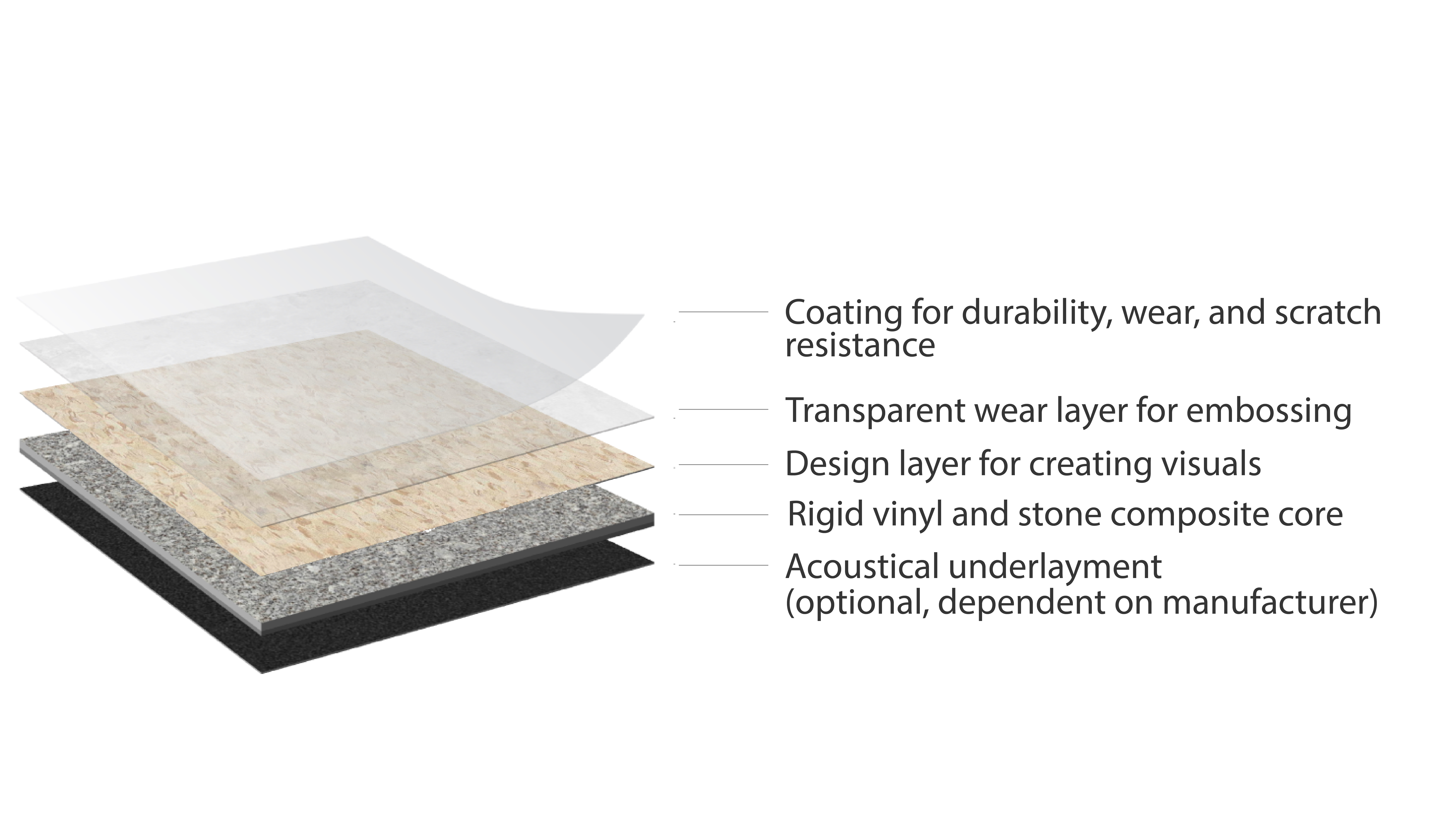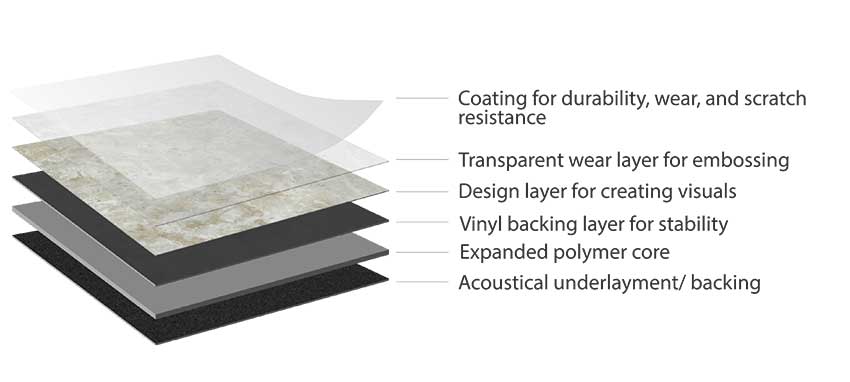Resilient Flooring-Certified!
For Green Globes – NC, Source Control and Measurement of Indoor Pollutants, Volatile Organic Compounds 6.2.1.3 (ANSI #11.2.1.3) the following credits in question format can benefit from specifying FloorScore® certified products. These include: Do 90% by area of the below interior products comply with prescribed limits of product VOC emissions? Specific Section 6.2.1.3.1 (ANSI #11.21.1.3.1) Floors/floor coverings. FloorScore® is referenced as documentation that contributes to compliance with this requirement. Flooring adhesives fall under Section 6.2.1.1 (ANSI #11.2.1.1) – Do adhesives and sealants (not including carpet adhesives) that are applied on site within, or part of, the building envelope’s continuous plane of air tightness comply with the following? FloorScore® is referenced as documentation that contributes to compliance with this requirement for adhesives.
Both LEED® v4.1 and Green Globes – NC references the CDPH Standard Method v1.2-2017 and SCAQMD Rule 1168 in the requirements for VOC content and VOC emissions. These are also the standards and methods referenced in the International Green Construction Code powered by ANSI/ASHRAE/ICC/USGBC/IES Standard 189.1 for indoor air quality as relevant to VOC content and emissions. Certifications, like FloorScore® that follow the building rating system requirements, provide an easier process for specifying products by the design professional, because the correlation of the regulations and related test methods are accommodated as part of the ecolabel. This saves time in having to further research the VOC content and emissions compliance of resilient floor covering products.

Photo courtesy of Novalis
AVA – Retail Installation, FloorScore® Certified.
ASSURE™ Certified
ASSURE™ Certified was conceived and developed by the Resilient Floor Covering Institute (RFCI) in conjunction with SCS Global as means for establishing uniform standards of quality for all rigid core luxury vinyl flooring products sold in North America; regardless of where they are manufactured. The ASSURE™ certified standard applies to both SPC, which stands for Stone Plastic (or Polymer) Composite featuring a core typically comprised of around 60% calcium carbonate (limestone), polyvinyl chloride and plasticizers, and WPC, which stands for Wood Plastic (or Polymer) Composite. WPC’s core typically comprised of polyvinyl chloride, calcium carbonate, plasticizers, a foaming agent, and wood-like or wood materials, e.g., wood flour. Both types of rigid core are durable and stable, however, SPC is denser overall due to its limestone composition. WPC is softer and quieter underfoot, while SPC offers better resistance from scratches or dents. Both are used in commercial and residential interior spaces.

Photo courtesy of Resilient Floor Covering Institute (RFCI)
ASSURE™ Certified logo for rigid core flooring.
ASSURE™ Certified WPC and SPC rigid core products meet the requirements in the Resilient Floor Covering Institute’s Rigid Core Flooring Certification Standard – SCS-0011, Version 1-0, May 1, 2020. Meeting the criteria, completion of testing as a requirement, and certification by SCS Global is the basis for this third-party verified ecolabel. Rigid core luxury vinyl products that are ASSURE™ Certified meet all requirements for indoor air quality and rigorous performance and are tested for heavy metals and ortho-phthalates content. The indoor air quality requirements are the same as outlined in the FloorScore® criteria and in the various building rating systems, standards, and the IgCC. The alignment of various requirements provides extra assurance for the specifier that products comply with building rating systems and their relevant criteria.

Photo courtesy of Resilient Floor Covering Institute (RFCI)
SPC Rigid Core Flooring Diagram.

Photo courtesy of Resilient Floor Covering Institute (RFCI)
WPC Rigid Core Flooring Diagram.
Environmental Product Declarations
Environmental Product Declarations (EPDs) can be a powerful tool to use when choosing materials for commercial projects. Per definition from the Sustainable Facilities Tool (SF Tool) developed by the General Services Administration, “Environmental Product Declarations (EPDs) are a way for manufacturers to take comprehensive, third-party-verified Life Cycle Assessments (LCAs), which are quite complex, and turn them into standardized declaration labels for their products.” Type III EPDs follow ISO 14025 and provide information about certain life cycle impacts of a product and are independently verified and made publicly available on various databases and websites. The EPDs are based on industry-standard product category rules, or PCRs, that are regularly updated with the stakeholders involved in a particular category. The third-party verifiers of Type III EPDs are called Program Operators, which include but are not limited to ASTM International, NSF International, SCS Global, UL Environment, and Smart EPD.
There are two types of Environmental Product Declarations that are used and referenced in building rating systems, e.g., LEED v4.1 BD+C and ID+C Materials and Resources Credits under Environmental Product Declarations and Green Globes Materials Credits under Product Life Cycle sections, respectively.
An Industry Wide EPD includes data that is aggregated from multiple manufacturers to complete a Life Cycle Assessment using the same PCR. These are typically completed through trade associations that have members that are all manufacturing the same product types. For resilient flooring, product category types that can be included to develop an Industry Wide EPD include Solid Vinyl Tile, Luxury Vinyl Tile (LVT), Rigid Core (SPC/WPC), Heterogeneous Sheet Vinyl, Homogeneous Sheet Vinyl, Rubber, Linoleum, and Cork.
Product Specific EPDs are developed for an individual product from a specific manufacturer within a specific category. For example, Brand ABC Luxury Vinyl Tile product or Brand XYZ of Heterogeneous Sheet Vinyl product.









